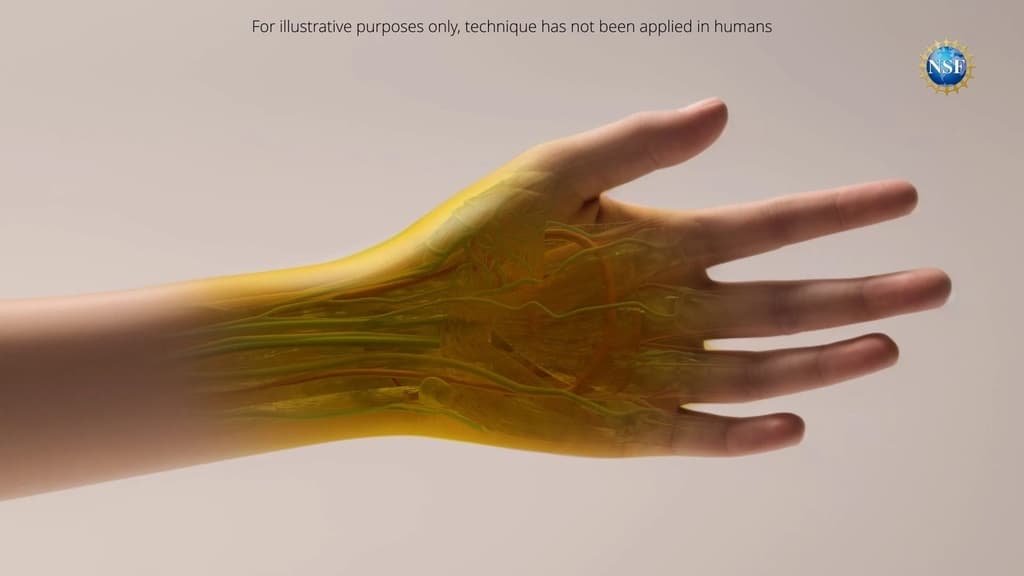A research group at Stanford in the US has managed to look inside a living mouse by applying the water-soluble dye tartrazine, which is also used to color cocktail cherries and liqueurs.
The reason why it is not possible to see through skin or hide in normal cases is that light is scattered, primarily in the protein- and fat-based parts, while the more water-based parts allow more light to pass through.
The dye absorbs light in the ultraviolet and blue spectrum in the water-filled parts and matches it in the more fat-based parts. This allows primarily light in the red and orange spectrum to penetrate deeper, as the light is not scattered to the same extent. Skin, muscles, and other tissue simply become transparent, and tissue deeper in the body becomes visible. The researchers could, for example, see blood vessels in the mouse's scalp, intestinal movements in the abdomen, and muscle fibers at work in the hind leg.
The yellow substance tartrazine is essentially harmless but can cause allergic reactions. An advantage is that the dye can be washed off when the examination is complete and that the effect occurs even at relatively low concentrations. So far, only tests have been conducted on animals in a laboratory environment, but if the method proves effective on humans as well, it could lead to medical benefits, for example, in detecting tumors.
The study is published in the scientific journal Science.





